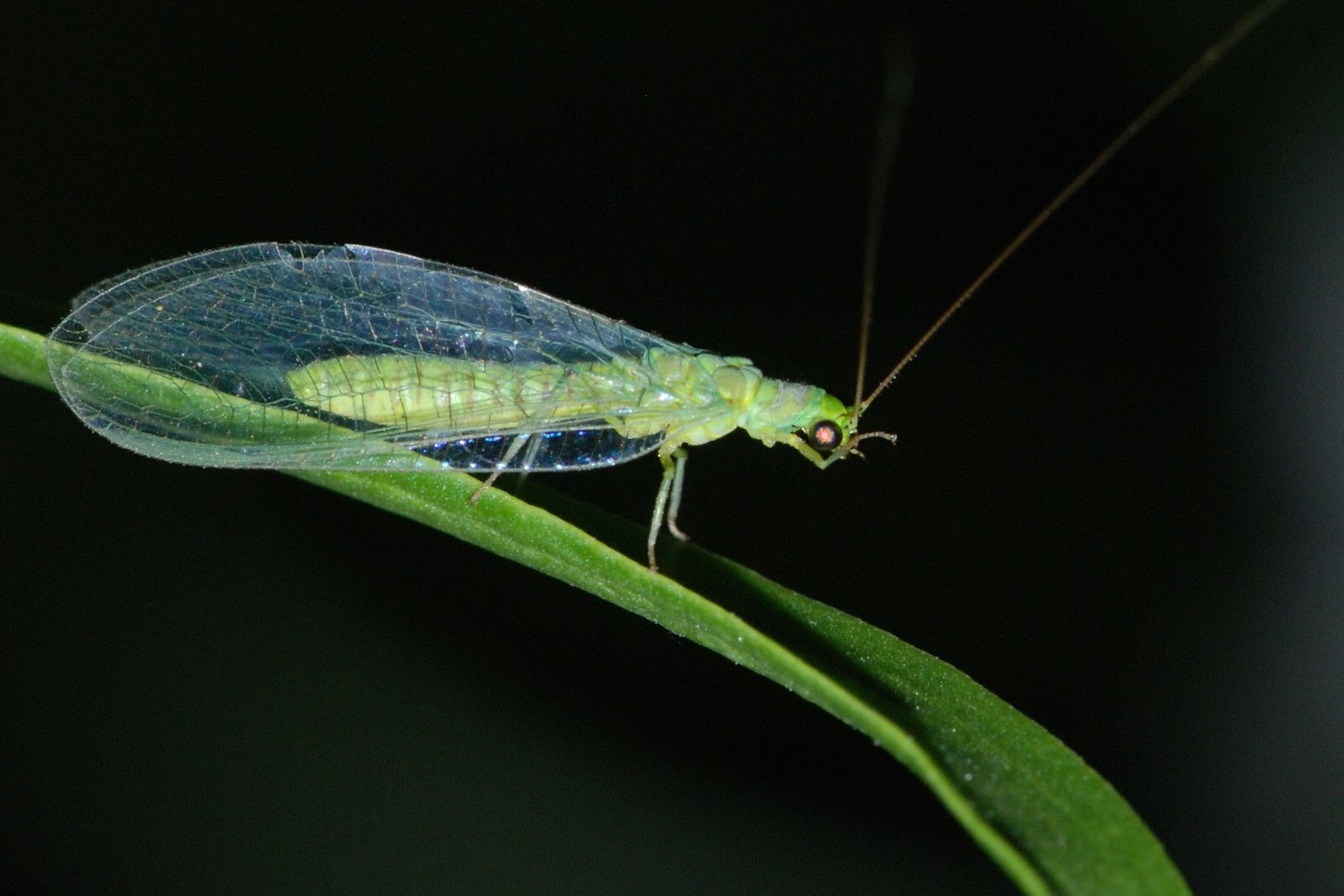What are green lacewings and why are they good to have around? Wizzie Brown, an insect specialist with the Texas A&M AgriLife Extension Office says that if you leave your porch light on, you’ll probably see green lacewings flying near the light. That’s a good thing, because green lacewings eat pests.
On how to identify green lacewings:
They are a kind of pale green color. They’re very, very beautiful in my opinion. They have lacy wings … so lots of veins, lots of cross-veins. A lot of times they are mistaken for dragonflies and damselflies. But lacewings are going to have shorter bodies, and they have smaller eyes and they have longer antennae.
On how lacewing larvae survive their hungry siblings:
A lot of the larvae are going to be feeding on insect eggs, as well as soft-bodied insects. So to avoid having their siblings consumed by the larvae that have already hatched out, the lacewing eggs are going to be at the end of this long, thin stalk on the plant. So when those larvae are walking around on the plant’s surface, looking for eggs and insects to eat, their brothers and sisters that haven’t hatched out yet are going to be up in the air above them, kind of like little balloons floating.
On how larvae hide from predators:
They will camouflage themselves. And they will either use dead bodies that they have consumed – so they’ll pile those on their back – or they’ll use pieces of the plant that they’re on. So if you see this little … glob of what looks like garbage moving around on a plant, if you pick all the garbage off, usually you’re going to find a lacewing larvae under there.
On attracting green lacewings:
If you want to encourage lacewings in your yard, have a population of aphids somewhere that they can feed on. Usually you have a sacrificial plant that you don’t care if you get aphids on; leave them there so that you’ll have lacewing food. And leave them there so you’ll have those pollen and nectar sources for the adults to feed on.
Written by Shelly Brisbin.













